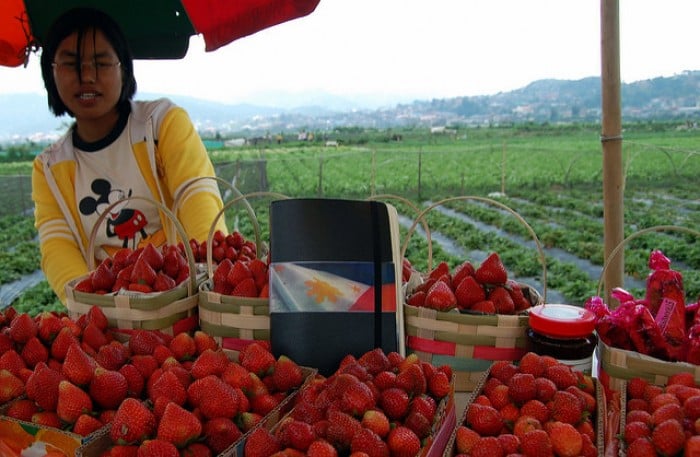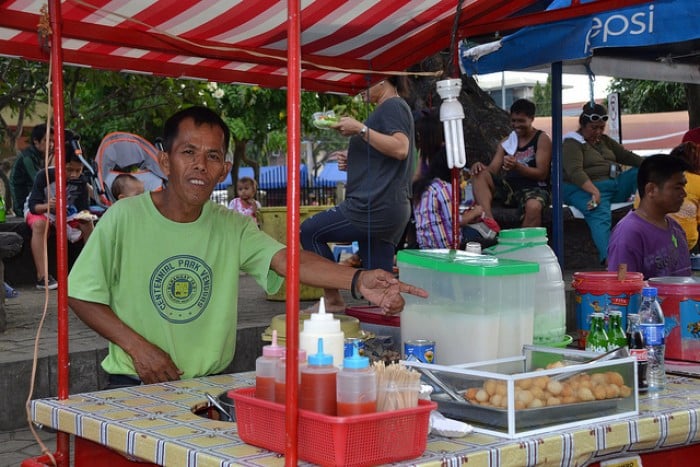Whenever there are international travellers or famous people who have been to the Philippines for a brief period, you would always hear them say “Mabuhay!” or “Mahal Ko Kayo!” and that’s about it. The Filipino language is influenced by several other languages, and that’s why the Filipino tongue has a resonating similarity with other major languages, such as Spanish and English. If you want to learn Tagalog and some of the basic yet important Filipino phrases when visiting the Philippines, then try to remember these so you can add more to your vocabulary. You might even surprise the locals with your language prowess.
Basic Filipino greetings
1. “Magandang araw!“

Magandang araw is the general greeting which means “beautiful day.” The variations include:
- Morning: “Magandang umaga” = Good morning!
- Noon: “Magandang tanghali” = Good noon! (a greeting used during noontime, between 11am and 1pm)
- Afternoon: “Magandang hapon” = Good afternoon!
2. “Maligayang bati!”

Maligayang bati is used if you want to greet someone well. This is often used interchangeably with “Maligayang kaarawan,” which means “Happy Birthday!” Of course, just like any greeting, this should be spoken with enthusiasm.
Filipino phrases for commuting & shopping
3. “Para!”

The word para came from the Spanish word parar, which means stop. This is spoken once you have reached your intended destination while using a public mode of transportation, particularly jeepneys, buses, and tricycles. This will express your desire to alight from the vehicle.
4. “Magkano?”

Image credit: Shubert Ciencia
Magkano means “how much?” when you want to ask for the price of particular merchandise. This Filipino word is used more often in public markets and bazaars.
Also read: 10 Tropical Airbnbs in the Philippines That You Need to Visit
5. “Wala na bang tawad / bawas?”

Divisoria shopping | Image credit: Timothy Albano
This is one of the most important Filipino or Tagalog phrases you need to learn if you are a hardcore haggler. This phrase means “can the price be reduced/is there any discount?” so that you can save some money to buy other stuff. These are the important Filipino / Tagalog words you need to know when shopping in places like Baclaran and Divisoria, as well as when shopping for souvenirs in markets.
6. “Sandali lang / Saglit.”

This phrase means “Hold on/Wait.” Whenever you are trying to get a hold of something or you are asking a person to be patient, these are the words to say.
7. “Gusto ko ito.”

Image credit: shankar s.
This means “I like/want this.” You’ll often hear this when you’re buying food or ordering at a restaurant, etc. On the flipside, the negative response would be “Ayaw ko nito / Ayoko nito,” which means “I don’t like this.”
Also read: 20 Legendary Filipino Snacks That Foreigners Should Try in The Philippines
8. “Pasensya ka na.”

Image credit: kelly reeves
In cases that you’ve caused inconvenience to a person, like keeping him waiting for other applicable situations, you can say this to express that you are “sorry for the trouble” that you might have caused. If you caused inconvenience to several people, this should be “pasensya na kayo.”
Filipino expressions when going away
9. “Aalis na ako.”

Aalis na ko means “I’m leaving now.” This is often used when someone is leaving the house or a particular place and letting others know.
10. “Paalam!”

Paalam is the Filipino’s response to the Japanese “Sayonara.” Paalam means “goodbye,” which is more often used when two or more individuals are parting ways.
11. “Ingat ka!”

This Filipino expression means “take care!” “Ingat kayo!” is used when saying take care to several people.
Thank you in Tagalog / Filipino
12. “Salamat! / Salamat po!”

This means “thank you” in Tagalog / Filipino. Whenever you receive something, it is what you say. And, if someone gives you thanks, you reply with “Walang anuman,” the Filipino equivalent of “You’re welcome.”
Also read: 15 Filipino Words & Expressions To Know if You’re Travelling to the Philippines
This list is non-exhaustive, as there are a lot more Filipino and Tagalog phrases that can be learned. You can easily adapt to the utilisation of the Filipino language once you start hearing Pinoys speaking it enthusiastically all around you. In general, you can ask the locals how to say something if you want to express English into Filipino words, and they will gladly translate for you. This way, the learning process becomes easier, and with enough practice, you can easily learn basic to good conversational Filipino in no time.
Ready to see the beauty of the Philippines? Start searching for your ideal Filipino homestay here.




